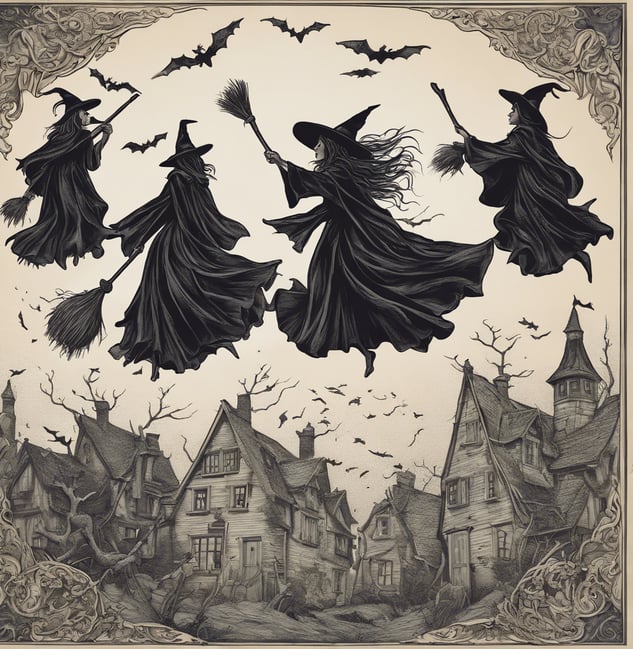Witchcraft in Canada


Witchcraft in Canada
Indigenous Beliefs
Before European contact, Indigenous peoples in what is now Canada had their own spiritual beliefs and practices. These included the use of shamanism, medicine men, and women who were believed to have spiritual powers. Such practices were integral to their culture and were not considered witchcraft in the pejorative sense introduced later by Europeans.
European Colonization
With the arrival of European settlers in the 16th and 17th centuries, especially from France and Britain, came the introduction of European beliefs about witchcraft. These settlers brought with them a fear of witches, stemming from European witch hunts and trials.
French Colonial Era
New France (1608-1763): The French settlers brought their Catholic faith, which had strict views on witchcraft as heresy. However, there are few recorded witch trials in New France compared to Europe. One of the rare cases involved an accusation against a woman named Marie-Joseph Angélique in 1734, though her trial was more about arson and rebellion than witchcraft.
British Colonial Era
Newfoundland (late 1600s): Newfoundland, a British colony, saw one of the earliest witchcraft trials in Canada. In 1680, a woman named Goody Gilbert was accused of witchcraft but was not executed.
Nova Scotia and New Brunswick (18th century): These areas had fewer witchcraft trials, reflecting the decline of such trials in Britain after the late 17th century.
19th and Early 20th Century
During this period, the fear of witchcraft faded, and Canada saw fewer accusations and trials. However, folk beliefs and practices persisted, especially in rural and isolated communities.
Spiritualism and Occultism
Late 19th to early 20th century: Spiritualism and occult practices gained popularity in Canada, as they did in other parts of the Western world. Séances, fortune-telling, and belief in supernatural phenomena became more common.
Modern Era
In the 20th and 21st centuries, witchcraft in Canada transformed significantly:
Neopaganism and Wicca: These modern pagan religions, which emerged in the mid-20th century, gained followers in Canada. They redefined witchcraft as a positive, nature-based spiritual practice.
Legal Status: Witchcraft itself is not illegal in Canada, but fraudulently claiming to have magical powers to deceive others for financial gain is. This is addressed under Canada's Criminal Code, which includes provisions against pretending to practice witchcraft for fraudulent purposes.
Cultural and Academic Interest
In recent years, there has been a resurgence of interest in witchcraft from cultural, historical, and academic perspectives. This includes the study of historical trials, folklore, and the influence of witchcraft on popular culture.
Summary
The history of witchcraft in Canada reflects a blend of indigenous spiritual practices, European colonial influences, and evolving societal attitudes. From early indigenous shamanistic practices to colonial witch trials, and from 19th-century spiritualism to contemporary neopagan movements, witchcraft in Canada has undergone significant transformation, shaped by diverse cultural and historical forces.
